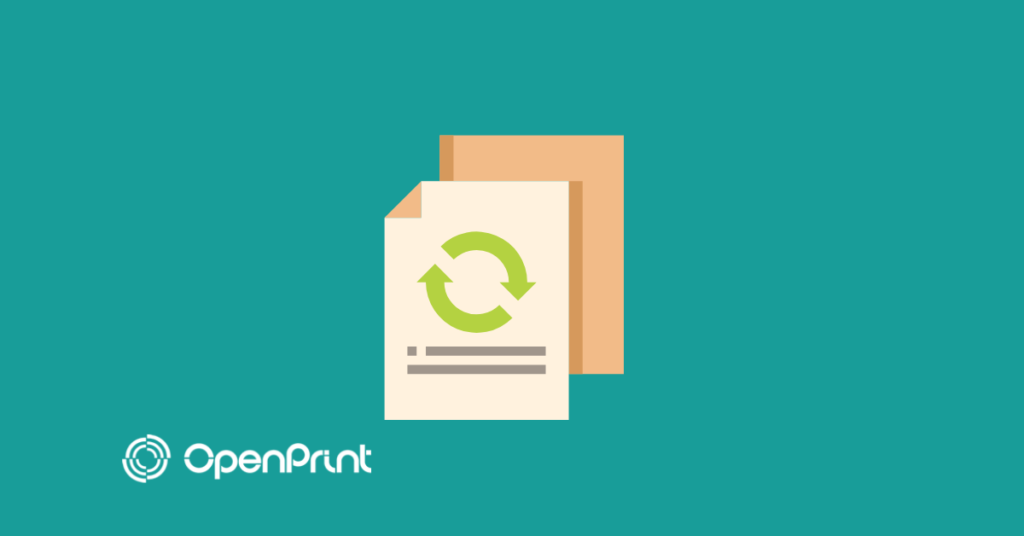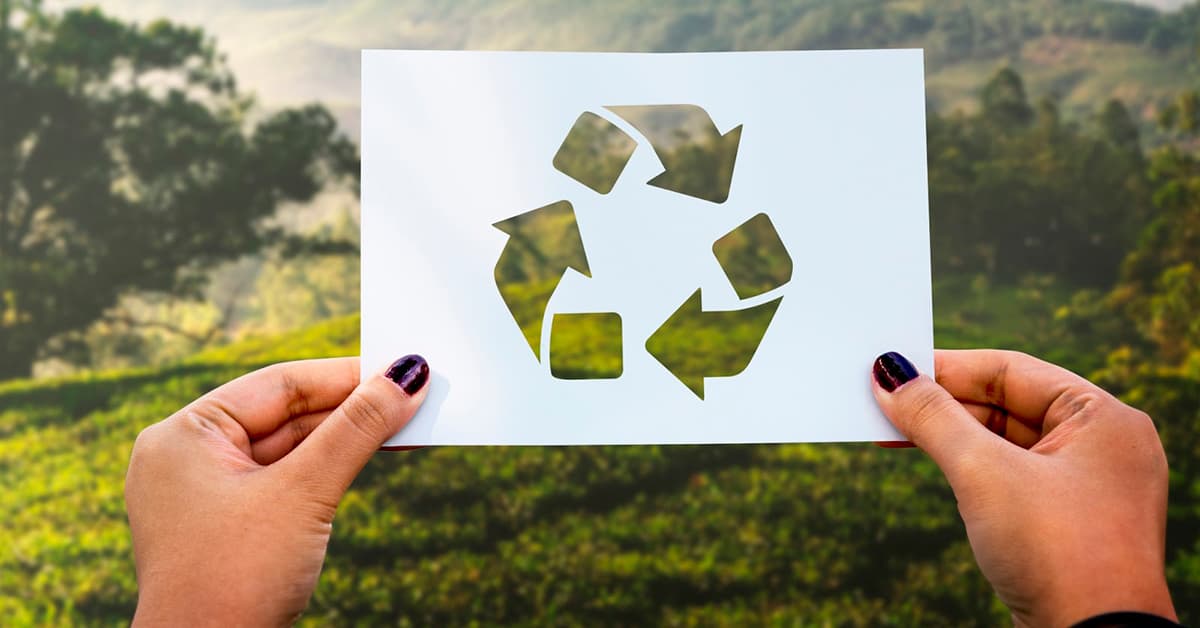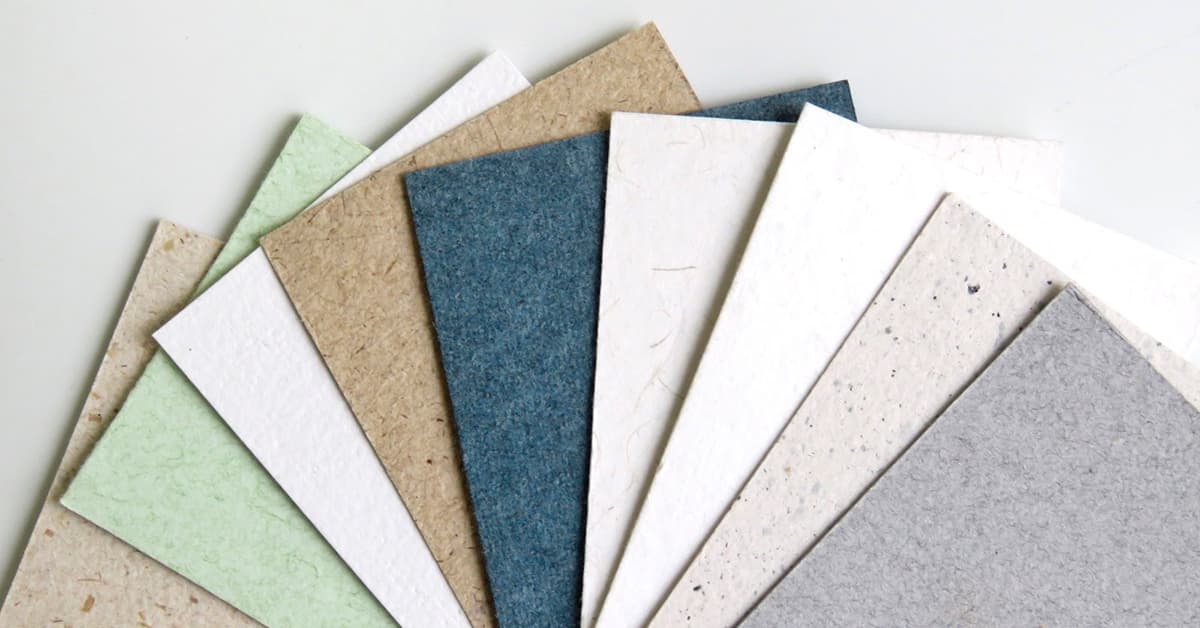
One of the most asked frequent questions we receive in the graphic industry sector is undoubted whether the ecological paper is the same as recycled paper. Today we write this article to differentiate these two types of papers and show you all the differences that exist between them since there is great confusion.
In recent years, the use of ecological paper has boomed due to the growing environmental concern in which we currently live. Companies that care about the sustainability of our planet already use it, and you, what are you waiting for?
What is ecological paper?
Ecological paper is recognized as that which results from a manufacturing process where respect for the environment and sustainability have been taken into account. This type of manufacturing seeks to minimize the resources used, such as water or electrical or thermal energy, and the waste generated to reduce the environmental impact.
Good practices are followed throughout the production process, for example; In the case of traditional paper bleaching, polluting elements are used, such as chlorine, unlike ecological paper, which uses other less harmful bleaches, such as oxygen.
What is recycled paper?
This type of paper is defined as everything that comes from cellulose fibers already used previously. It is not necessary to cut down any trees to make recycled paper, but rather arises from the use of existing paper that is no longer useful in its original form.
This waste paper can come from before reaching the consumer and be used, such as scraps, or waste already used by consumers. Recycled paper may or may not be eco-friendly, depending on the type of process used to make the original paper.
What are the main differences between ecological paper and recycled paper?
Once the two types of papers have been explained in detail, we are going to show you a series of differences that exist between them to facilitate the choice when designing a new printing project:
Raw material
The ecological paper can come from certified cellulose, of forest origin, which must come from controlled fast-growing forests. These plantations are legally certified so they guarantee proper management according to agreed environmental, social, and economic standards. This paper can also come from polluting waste, the most sustainable option; cotton, coffee, corn, jute, or lemongrass clothing.
In contrast, recycled paper comes from cellulose fibers recovered from other paper or cardboard that may not have followed a sustainable manufacturing process, so it doesn’t have to be eco-friendly.
Manufacturing process
Recycled paper can come from a recovery process and an original paper with non-polluting manufacture, so it would turn it into an ecological paper. But if not, it would be a less polluting role than the traditional one but not an ecological role.
Ecological paper, as we have mentioned before, must always follow a non-polluting manufacturing process where no chemicals or certain bleaches are used.
Environmental impact
The most important difference between these two types of papers is the environmental impact they generate. On the one hand, ecological paper leaves a minimal environmental impact thanks to the replacement of highly polluting elements. On the other hand, recycled paper, by going through two different manufacturing processes, has a high degree of environmental impact that is detrimental to our planet.
What types of green papers will you find in OpenPrint?
As a printing specialist company that follows the path towards sustainability, we have the FSC certificate (Forest Stewardship Council). This certificate confirms that we work with three types of papers that ensure the sustainable and circular exploitation of forests; pure, mixed, or recycled paper.
We also have ecological papers available from waste, a more sustainable type of paper, designed for graphic printing. Papers made with residues recover the surpluses of the textile industry and agricultural production, to convert them into natural fibers useful for making paper. Thus, an ecological type of paper is achieved with a creative, high-quality finish, suitable for any offset printing and digital printing:
RAW – Sheedo Papers
The entire Sheedo Papers RAW Collection is created using cotton clothing waste and waste from agricultural plantations of coffee, corn, jute, or lemongrass.
The leftover clothing from the textile industry is recycled, which could possibly end up in a landfill, and the emission of gases from the burning of waste is avoided of the crops.
Raw ecological papers are very versatile. Thanks to its weight of 300 g and its smooth and consistent texture at the same time, they can be used both for printing and for any type of packaging finish.
Printing business cards, promotional flyers, or any type of communication of your company on waste papers is a perfect way for your brand to easily convey its social and environmental commitment.
Conclusion
We hope that you have finished this article being an expert in ecological papers and that you can differentiate them perfectly with recycled papers. At Open Print we are committed to all these options that can reduce the environmental impacts generated by prints, so we encourage you to join our cause and go to our online print store to purchase our eco-friendly printed products.
Having seen the large number of ecological and recycled paper options that exist today, perfect for printing, you no longer have an excuse. Become a company that pursues the sustainability of our planet Earth with just a simple change. Contact us!
Share it at your Social Networks
You may also like...







No Comments in What is the difference between ecological paper and recycled paper?
Sorry, comments are closed...